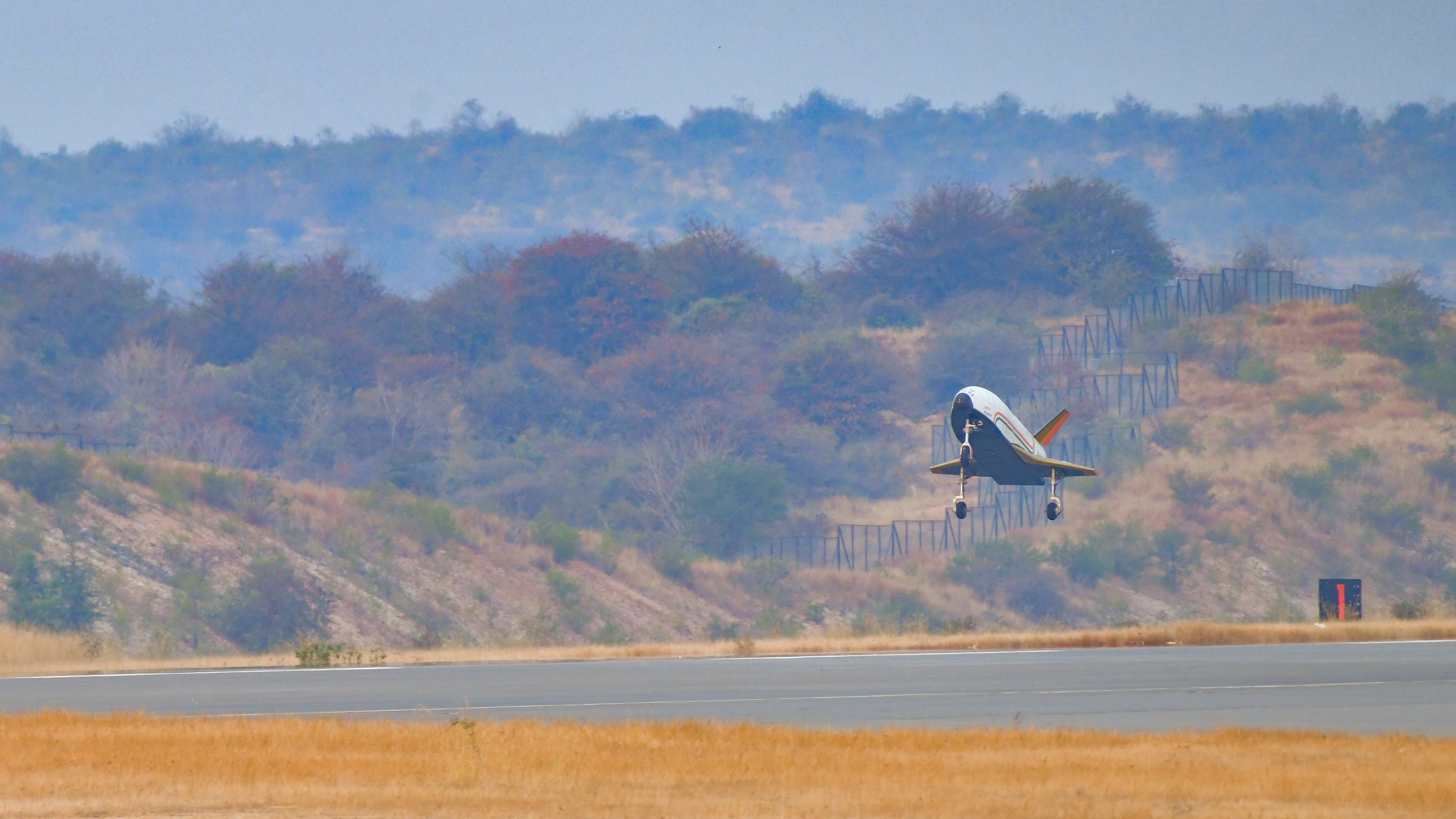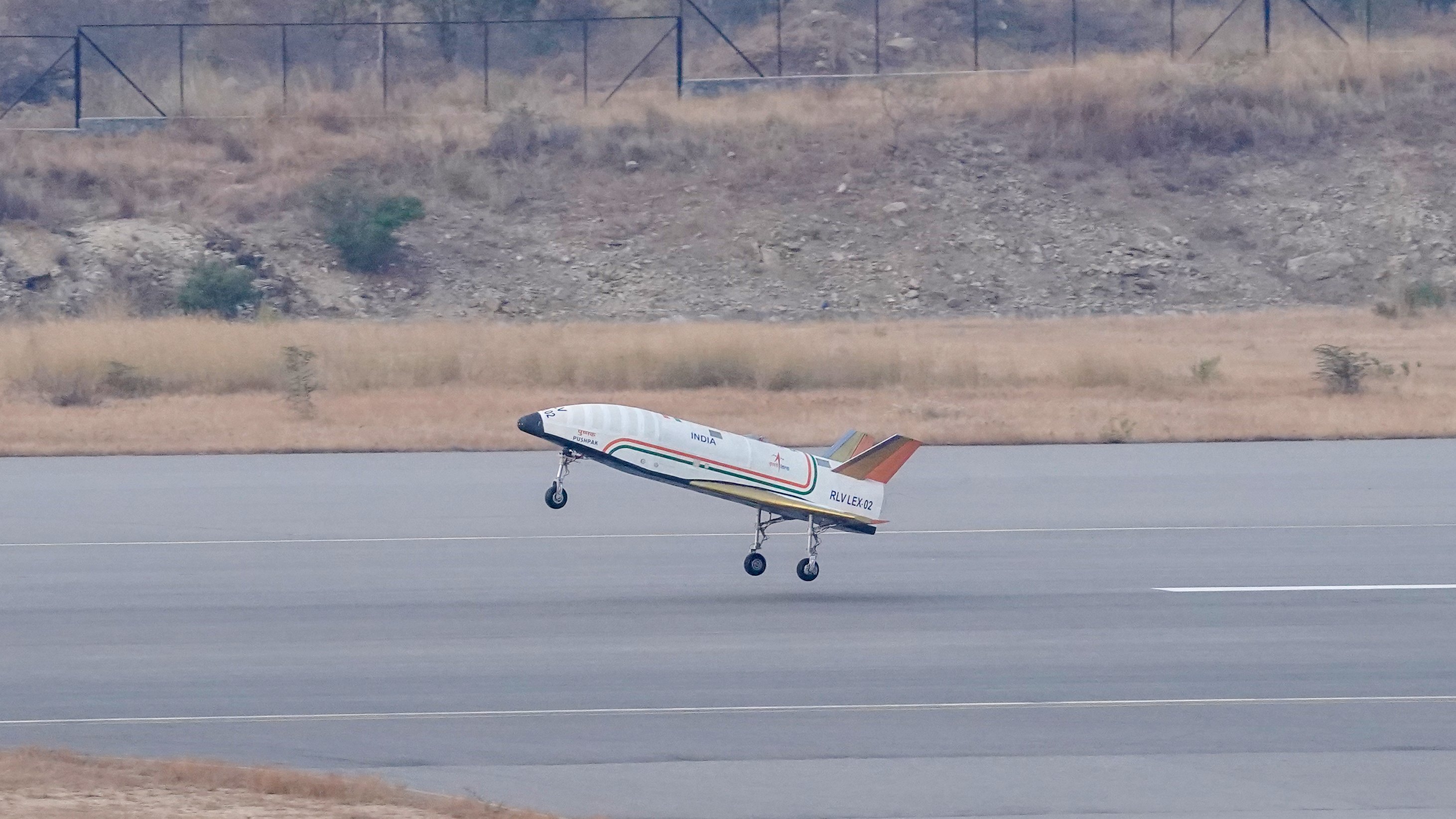22.03.2024
After release at a distance of 4 km from the runway, Pushpak autonomously approached the runway along with cross-range corrections. It landed precisely on the runway and came to a halt using its brake parachute, landing gear brakes and nose wheel steering system, ISRO said.

March 22, 2024
ISRO has achieved a major milestone in the area of Reusable launch vehicle (RLV) technology, through the RLV LEX-02 landing experiment, the second of the series, conducted at Aeronautical Test Range (ATR), Chitradurga in Karnataka today morning at 7:10 hrs IST.
After the RLV-LEX-01 mission was accomplished last year, RLV-LEX-02 demonstrated the autonomous landing capability of RLV from off-nominal initial conditions at release from Helicopter. The RLV was made to undertake more difficult manoeuvres with dispersions, correct both cross-range and downrange and land on the runway in a fully autonomous mode. The winged vehicle, called Pushpak, was lifted by an Indian Airforce Chinook helicopter and was released from 4.5 km altitude. After release at a distance of 4 km from the runway, Pushpak autonomously approached the runway along with cross-range corrections. It landed precisely on the runway and came to a halt using its brake parachute, landing gear brakes and nose wheel steering system.
This mission successfully simulated the approach and high-speed landing conditions of RLV returning from space. With this second mission, ISRO has re-validated the indigenously developed technologies in the areas of navigation, control systems, landing gear and deceleration systems essential for performing a high-speed autonomous landing of a space-returning vehicle. The winged body and all flight systems used in RLV-LEX-01 were reused in the RLV-LEX-02 mission after due certification/clearances. Hence reuse capability of flight hardware and flight systems is also demonstrated in this mission. Based on the observations from RLV-LEX-01, the airframe structure and landing gear were strengthened to tolerate higher landing loads.
The mission was accomplished by Vikram Sarabhai Space Centre (VSSC) along with the Liquid Propulsion System Centre (LPSC) and the ISRO Inertial Systems Unit (IISU). Collaboration from various agencies including IAF, ADE, ADRDE and CEMILAC contributed to the success of this mission. Shri S Somanath, Chairman, ISRO / Secretary, DOS, congratulated the team for the flawless execution of this complex mission. On the success of the landing experiment, Director VSSC Dr S Unnikrishnan Nair mentioned that through this repeated success, ISRO could master the terminal phase manouvering, landing and energy management in a fully autonomous mode, which is a critical step towards the future Orbital Re-entry missions
The team was guided by Shri Sunil P, Programme Director, Advanced Technology and Systems Programme, VSSC. Shri J Muthupandian, Project Director, RLV was the Mission Director and Shri B Karthik, Deputy Project Director, RLV was the Vehicle Director for this mission.
For the success of this experiment, ISTRAC provided tracking support, SAC provided a Pseudolite system and a Ka-band Radar Altimeter, LPSC offered all pressure sensors on the wing body, IISU provided navigation hardware/software and an integrated solution. Metrological and wind measurement support was provided by SDSC-SHAR, and URSC offered ground power support.








